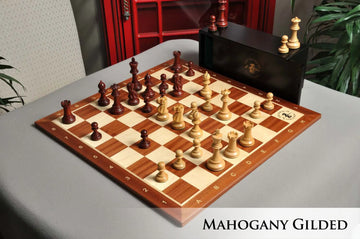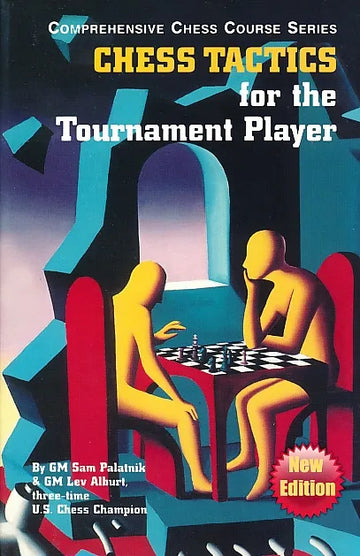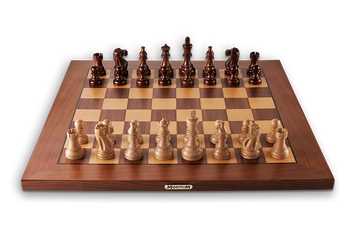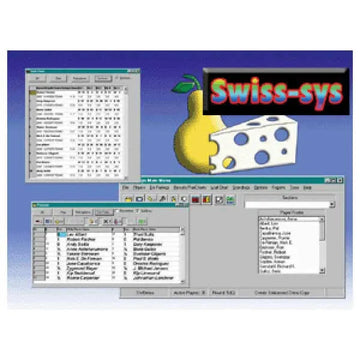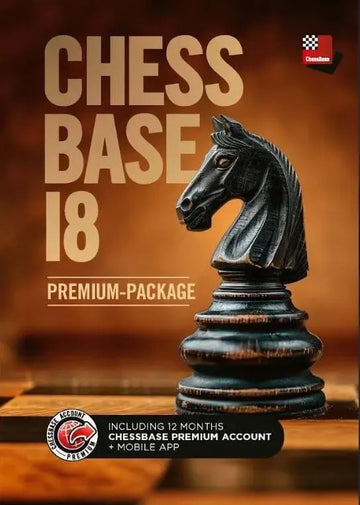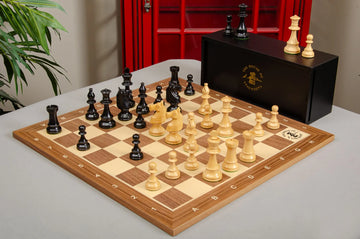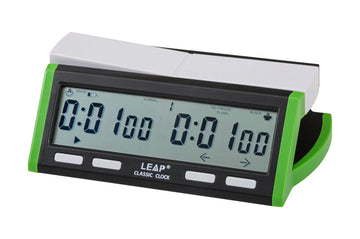How to Run the Perfect Chess Tournament
So you want to run a chess tournament. You're doing chess players in your area an important service. But for a tournament and chess matches to go smoothly, you should have a clear set-up and structure. Here's how you can run the perfect chess tournament.

USCF and FIDE Tournaments vs Unrated Chess Tournaments
There are two general kinds of chess tournaments: rated tournaments and unrated tournaments.
Rated chess tournaments count towards a player's ELO. This is an official chess rating based on past tournament performance. USCF tournaments must follow a standard set of guidelines. You must become a tournament director to run a rated chess tournament.
USCF events can also be FIDE-rated. This allows players to earn norms toward internationally respected titles. USCF tournaments with longer time controls require players to keep notation.
USCF-rated tournaments also require that players use a standard board.
Related: Analysis Chess Set & Board Combination
Rated chess tournaments tend to be more competitive. Still, unrated tournaments allow you to set your own standards and rules and lower the barrier to enter. Players don't need to have a USCF membership to be eligible to play in an unrated tournament.
Other Chess Tournament Types
There are a few special tournament types for different circumstances.
Scholastic tournaments allow school-aged children to compete against one another. This can be a fun way for studious young players to challenge like-minded hopefuls.
Women's tournaments are intended to encourage female players' participation. Women are highly underrepresented in the community. These tournaments are designed to keep them active members.

Some online tournaments use the USCF online rating system, which was created in June 2020 to accommodate the pandemic. They are categorized similarly to their in-person counterparts.
Variant tournaments, like Bughouse, adhere to unique rules. They must be unrated but can be a fun, unique experience.
Another example is blind or blindfold chess, where players must compete without seeing the board.
This differs from tournaments for people with visual impairments, where the rules cater specifically to blind players' needs. Touch moves and standardized boards are also different in these types of tournaments.
Common Chess Tournament Sections
Depending on the expected number of participants, consider dividing the tournament into sections. Then, use players' ELO to determine which sections they are eligible to participate in.
Unrated sections are for players without an established USCF rating.
You can also create sections for players under a particular rating, such as U800, U1200, and U1600.
Open sections allow rated players of all levels to face each other.
Breaking up your tournament into multiple sections has its pros and cons.
On the one hand, having many sections allows players to face people closer to their own ELO more often and be challenged at a similar level. However, players will not play or beat someone much higher than them.
On the other hand, playing in an open section or open tournament gives lower-rated players the exciting opportunity to face much harder opponents in their chess matches, assuming their rating represents their abilities. This can allow underrated players to shine through with an impressive performance.
One downside is that higher-rated players might be frustrated to see their score take a hit if they fall victim to an underrated player's attack. Lower-rated players in open sections might lose more often and be disappointed.
Chess Match Pairing Systems and Byes: Establish a pairing style for your tournament.
The most common pairing system is the Swiss pairing system.
In this system, players' ratings decide the first round's pairing. The top player in the top half of the rated players faces the top player in the bottom half. The tournament director then uses the outcome of the first chess match to determine the pairings for the second round, and so on.
In a Swiss system, no player faces the same opponent twice. As the rounds continue, players face others closer to their performance.
Another pairing option is round robin. Players will be grouped into four based on ability or ELO. They will face each player in their group across three chess matches.
When there aren't enough players for everyone to have an opponent, the remaining player gets a bye. This means they sit out for the round but usually receive ½ point or 1 point towards their score for the tournament.
Knockout-style tournaments are bracket tournaments in which the player who loses each round is eliminated. The winners face each other in the following rounds until one brave player is crowned champion.
The major drawback of this pairing style is that losers don't have the opportunity to continue to the next battle.
Regardless of your preferred pairing system, when pairing players, it's critical to do your best to ensure everyone is assigned white and black evenly across their games. This is because white gets a slight advantage from making the first move.
Time Control, Delay, and Increment
Clearly outline your tournament's time controls.

A general overview of time controls by USCF is as follows:
- Regular or classical games are 30 minutes or longer. USCF requires that players record their games when time control is 30 minutes or more.
- Quick or rapid games are between 10 and 29 minutes.
- Blitz games are anywhere between 3 and 10 minutes.
- Bullet games under 3 minutes are not USCF-rated.
Delay means that a player gets a small amount of time at the start of each turn before their clock starts dwindling. Regular or classical USCF-rated games will use delay.
Increment adds a small increment of time back with every move and is common for blitz and bullet games.
Lastly, the sudden death time control has no delay or increment.
Related: ZMart Pro Digital Chess Clock
Entry Fees, Prizes and Awards: Clearly outline entry fees, prizes, and awards.
There are pros and cons to charging entry fees.
By charging an entry fee, you can be more sure that players will show up on tournament day. Plus, you can fund prize money for players who place.
Stronger players will be enticed to attend and fight for a win. On the other hand, players may be unable to afford it, making your event less accessible.
Even if you don't have any money as a prize, for many chess players, bragging rights, some well-deserved ELO rating boost, and perhaps a trophy or medal are enough motivation to get them to the event.
Breaking Ties at a Chess Tournament
Decide how you will break a tie well before the first chess match. Two ways to break ties are playoffs and calculations.
In a playoff, two players play an additional, usually shorter game to determine a winner.
With calculation-based tie breaks, a tournament director will decide a winner using information about each player's strength.
One example is to use a player's ELO or opponents' strength. The USCF Rules of Chess Handbook outlines a few tiebreaks by calculation.
The fastest way to break a tie is to flip a coin. However, this method completely ignores skill and performance.
Set the Environment and Establish Etiquette for the Chess Tournament
You should aim to create an environment where players will feel respected and free from distractions. This is why you should establish how players should carry themselves beforehand.
Outline all of your tournament's rules in writing beforehand.
If players have questions, you should be able to point them back to a clear set of rules. Every tournament is different, but it should all be fair.
Have enough arbiters for your event. Most chess players would be annoyed if a player across from them breaks the rules or is distracting in the middle of a game.
You should have enough arbiters to spot violations and settle disagreements between players. A rule of thumb is to have one arbiter per every 20 players.
Tournaments have different rules regarding spectators. You can ask players to leave the play area after their game is finished, or you can allow anyone to spectate freely.
Set a clear standard for electronic devices. Make it clear to players where their devices should be during the tournament. Note whether they should be on silent or fully powered down.
Tournaments are a fun way for chess players to challenge their strengths, keep track of their improvements, and play different players.
As you can see, there are plenty of ways to set up a tournament. The most important part is to set clear expectations and a fair environment. Best of luck to all the players at your upcoming tournament!

